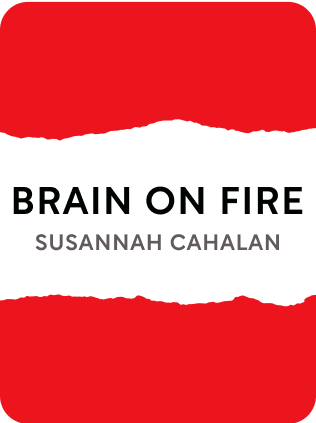

This article is an excerpt from the Shortform summary of "Brain On Fire" by Susannah Cahalan. Shortform has the world's best summaries of books you should be reading.
Like this article? Sign up for a free trial here .
What was the Susannah Cahalan disease? How did she come to understand it?
The Susannah Cahalan disease was anti-NMDA-receptor encephalitis. She learned about it as she recovered.
Read on to learn about Susannah Cahalan, disease, and recovery.
The Susannah Cahalan Disease
Susannah and two colleagues from work attend a lecture Dr. Najjar is giving on anti-NMDA-receptor encephalitis. In the lecture, he uses Susannah as a case study. Though he never cites Susannah’s name, her colleagues recognize that the lecture is about Susannah.
That afternoon, the Post’s Sunday editor asks Susannah if she’d be willing to write a first-person account of her illness. It’s the assignment Susannah has been hoping for.
She has four days to write the story. She interviews Stephen, her family, and Drs. Najjar and Dalmau. She learns many things in the course of her research:
- Children make up 40 percent of those diagnosed with the disease. Their symptoms include temper tantrums, violence, oversexuality, and mutism. They may start speaking in tongues or repeating other people’s words. Their behavior is frequently misdiagnosed as autism. Formerly, it was described as evil, and exorcism was prescribed as the cure.
- Many adults diagnosed with the disease were originally diagnosed with schizophrenia or autism. A small number of doctors, including Dr. Najjar, are currently researching the link between schizophrenia, autism, and autoimmune disease. (Shortform note: In 2018, Dr. Najjar suggested the term “autoimmune psychosis” to designate a subset of diseases in which autoimmune disorders masquerade as psychosis. See Najjar’s recent research published in the Journal of Neuroinflammation.)
- It’s cost-prohibitive to test all psychiatric patients for an autoimmune disease. Susannah was lucky; she had a financial safety net that allowed for expensive testing. Many people with lifelong psychiatric conditions don’t have that kind of safety net and may remain incorrectly diagnosed their entire lives.
- Many doctors don’t keep abreast of current medical research. While writing her article, Susannah reached out to Dr. Bailey, the neurologist who had declared Susannah an alcoholic. She was shocked to find that he had never heard of anti-NMDA-receptor encephalitis, even though her case had recently been covered in every major medical journal, the New England Journal of Medicine, and the New York Times.
To illustrate the article about Susannah Cahalan disease, the photo editor wants to run images from the EEG videos taken during Susannah’s hospital stay. When Susannah sees herself onscreen, she shudders. There she is on camera, staring into the lens, her hair dirty, her hospital gown slipping off her shoulder. Her eyes blaze with manic fear, as if she’s staring into the face of death. She mouths a single word: “Please.”
Susannah is frightened by seeing herself so unhinged. What frightens her more, though, is the fact that emotions that once wracked her so completely have vanished entirely. The Susannah in the EEG video is a foreign entity to the Susannah writing about her own illness.

———End of Preview———
Like what you just read? Read the rest of the world's best summary of Susannah Cahalan's "Brain On Fire" at Shortform .
Here's what you'll find in our full Brain On Fire summary :
- How a high-functioning reporter became virtually disabled within a matter of weeks
- How the author Cahalan recovered through a lengthy process and pieced together what happened to her
- How Cahalan's sickness reveals the many failures of the US healthcare system






